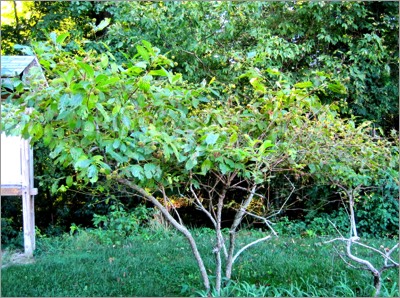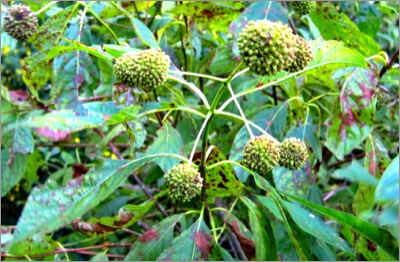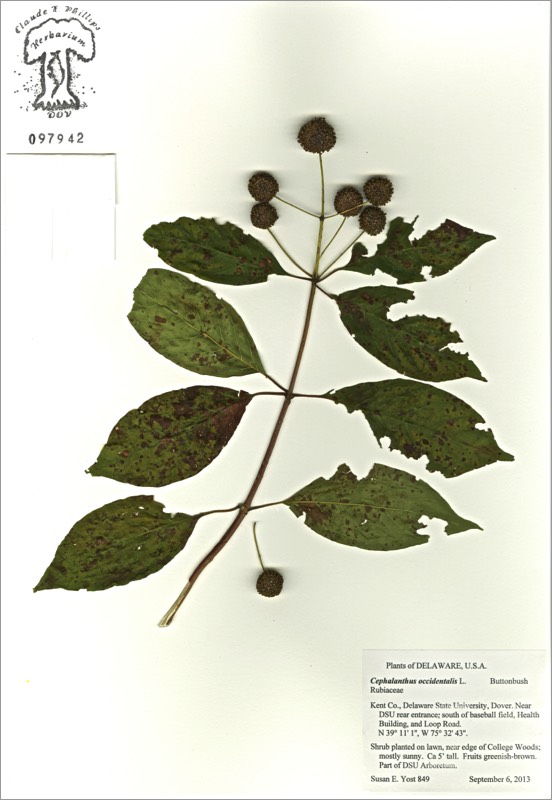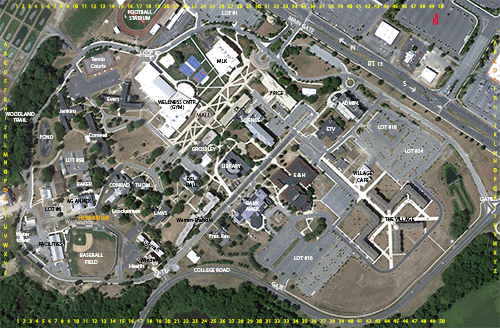Cephalanthus occidentalis


Cephalanthus occidentalis
BUTTONBUSH
Rubiaceae
E. & S. North America
Location: map coordinates Z-14 (southeast of baseball field, west of DSU rear entrance gate), N 39°11'1'' W 75°32'43''
Planting history: presently unknown.
Description:
Native species, State Rank S5 (very common in Delaware)
BUTTONBUSH
Rubiaceae
E. & S. North America
Location: map coordinates Z-14 (southeast of baseball field, west of DSU rear entrance gate), N 39°11'1'' W 75°32'43''
Planting history: presently unknown.
Description:
- deciduous shrub (or small tree)
- etymology: Cephalanthus is Greek for head flower; occidentalis for western
- leaves opposite, or occasionally in whorls of 3
- flowers small, white; clustered in dangling round inflorescences (heads)
- fruit round, brownish; resembles “buttonwood”/sycamore (Platanus) fruit; common name “buttonbush” probably from buttonwood-like fruits
- native habitat swamps, streamsides
- family Rubiaceae, the madder family, is mostly tropical
Native species, State Rank S5 (very common in Delaware)


HIT REFRESH TO START LOCATION GRAPHIC